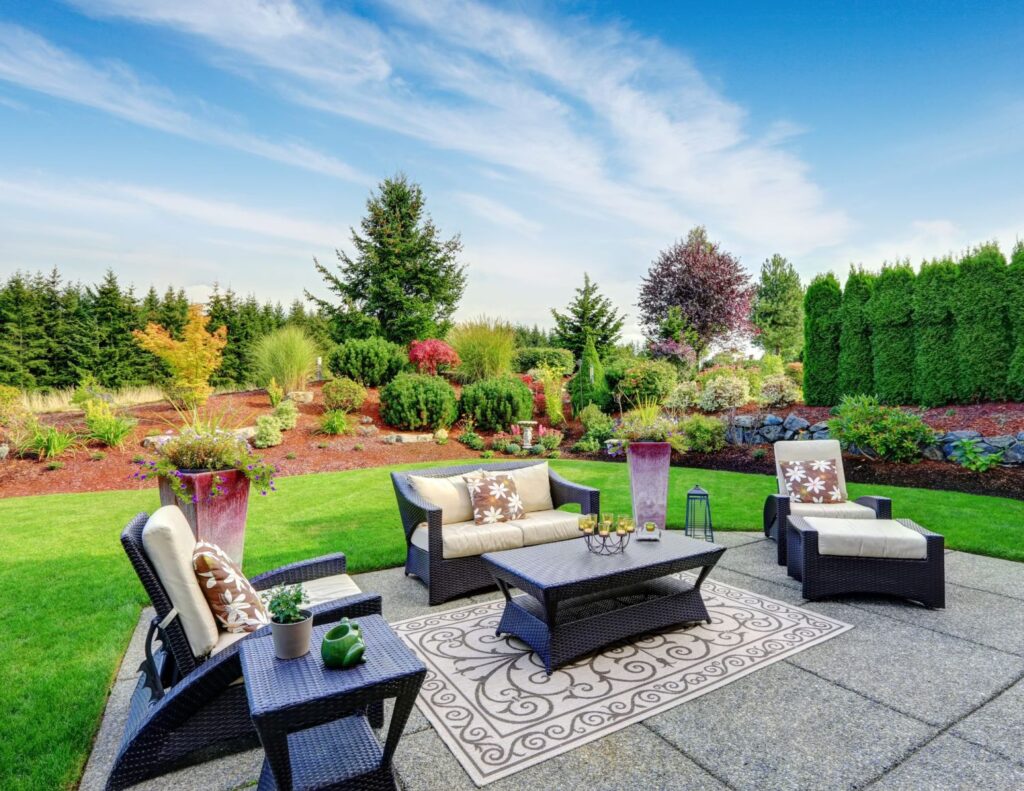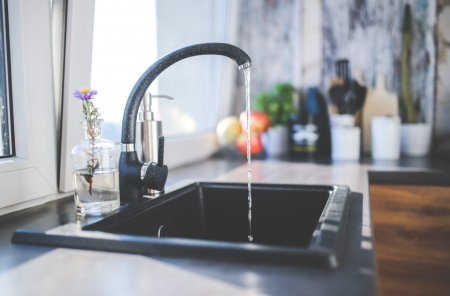- Maximizing small outdoor spaces through vertical gardening, multifunctional furniture, and strategic lighting
- Implementing sustainable landscaping practices like using native plants, rainwater harvesting, and organic fertilizers
- Creating functional zones in outdoor spaces for different activities, such as outdoor kitchens, lounges, and playgrounds
- Enhancing curb appeal in the front yard with welcoming pathways, landscaping that complements architectural style, and water features or decorative accents
Residential landscaping transforms outdoor spaces into functional, beautiful extensions of the home. It involves thoughtful arrangement of plants, hardscapes, and amenities to create harmonious environments. In this guide, we’ll explore residential landscaping principles, design, and maintenance, empowering homeowners to create vibrant outdoor retreats.
1. Maximizing Small Outdoor Spaces: Creating an Oasis in Limited Square Footage
When faced with a small outdoor space, it can be challenging to envision how to transform it into a tranquil oasis. However, with creativity and strategic planning, even the tiniest areas can be transformed into beautiful residential landscaping.
1.1 Vertical Gardening: Utilizing Walls and Structures
One of the most effective ways to maximize a small outdoor space is through vertical gardening. By utilizing walls, fences, and other structures, you can create a lush green space without taking up precious square footage. Consider installing vertical planters or trellises to grow climbing plants such as ivy, jasmine, or roses. Not only will this add beauty to your outdoor area, but it will also provide privacy and shade.
1.2 Choosing the Right Furniture: Multifunctional Pieces for Small Spaces
When selecting furniture for a small outdoor space, it is essential to choose pieces that are not only aesthetically pleasing but also multifunctional. Look for furniture with built-in storage options, such as benches with hidden compartments or coffee tables with storage space. Additionally, consider collapsible or stackable furniture that can be easily stored when not in use. This will ensure that your outdoor space remains clutter-free and functional.
1.3 Strategic Lighting: Enhancing the Ambiance and Perception of Space
Proper lighting can greatly enhance the ambiance and perception of space in a small outdoor area. Consider installing soft, warm lighting fixtures to create a cozy and intimate atmosphere. Use lighting to highlight key features such as plants, sculptures, or water features. Additionally, incorporate string lights or lanterns to add a whimsical touch to your outdoor space. By strategically placing lighting fixtures, you can make your small outdoor area feel larger and more inviting.
2. Sustainable Landscaping: Establishing an Eco-Friendly Outdoor Environment
In today’s environmentally conscious world, sustainable landscaping has become increasingly popular. Not only does it help conserve resources, but it also creates a healthier and more vibrant outdoor environment. Here are some sustainable landscaping practices to consider:
2.1 Native Plants and Drought-Tolerant Species: Enhancing Biodiversity and Conservation
One of the cornerstones of sustainable landscaping is the use of native plants and drought-tolerant species. These plants are well-adapted to the local climate and require minimal water and maintenance. By incorporating native plants into your landscaping, you can help enhance biodiversity, support local wildlife, and reduce the need for excessive watering.
2.2 Rainwater Harvesting: Utilizing Precipitation for Irrigation
Rainwater harvesting is an excellent way to reduce water consumption and reliance on municipal water sources. By installing rain barrels or a rainwater harvesting system, you can collect and store rainwater for future irrigation use. This not only conserves water but also reduces your water bill and helps alleviate the strain on local water resources.
2.3 Composting and Organic Fertilizers: Nurturing Healthy Soils
Healthy soils are the foundation of any successful landscape. Instead of relying on chemical fertilizers, consider composting organic waste and using it as a natural and nutrient-rich fertilizer. Composting not only reduces waste but also improves soil health and promotes the growth of vibrant and resilient plants. Additionally, incorporating organic fertilizers, such as compost tea or manure, can further enrich the soil and support the overall health of your outdoor environment.
3. Creating Zones: Designing Functional Areas for Different Outdoor Activities
Creating distinct zones within your outdoor space can help maximize its functionality and cater to different activities. By dividing your outdoor area into designated zones, you can create an outdoor experience that meets the needs and preferences of your household. Here are some ideas for outdoor zones:
3.1 Outdoor Kitchen and Dining: Enhancing the Culinary Experience
An outdoor kitchen and dining area is perfect for those who love to entertain and enjoy al fresco dining. Include a grill, countertop space for food preparation, and a dining area with comfortable seating. Consider incorporating shading options, such as pergolas or umbrellas, to provide relief from the sun while cooking and dining.
3.2 Lounge and Entertainment Area: Relaxation and Socializing
Create a dedicated lounge and entertainment area where you can unwind and socialize with family and friends. Include comfortable seating options, such as outdoor sofas or lounge chairs, and consider adding a fire pit or outdoor fireplace for warmth and ambiance. Don’t forget to incorporate side tables or a coffee table for convenience.
3.3 Playgrounds and Recreation: Ensuring Fun for the Whole Family
If you have children or enjoy recreational activities, consider dedicating an area of your outdoor space to a playground or recreation zone. Install a swing set, slide, or play structure for children to enjoy. Additionally, incorporate space for lawn games such as cornhole or badminton to provide entertainment for the whole family.
4. Enhancing Curb Appeal: Transforming the Front Yard into a Welcoming Haven
The front yard serves as your home’s first impression and sets the tone for the rest of your outdoor space. Enhancing curb appeal not only increases the value of your home but also creates a welcoming haven for you and your guests. Here are some tips for enhancing your front yard:
4.1 Creating a Striking Entrance: Welcoming Pathways and Illumination
A well-designed entrance creates a strong first impression. Consider installing a pathway lined with beautiful plants or flowers that leads to your front door. Incorporate lighting fixtures along the pathway to guide visitors and create a warm and inviting ambiance.
4.2 Landscaping to Complement Architectural Style: Harmony in Design
When designing your front yard, it is important to consider the architectural style of your home. Choose landscaping elements that complement the overall design and create a sense of harmony. For example, if you have a modern home, consider incorporating clean lines and minimalist plantings. If you have a traditional home, opt for classic and timeless landscaping features.
4.3 Incorporating Water Features and Decorative Accents: Adding Visual Interest
Water features, such as fountains or ponds, can add a touch of tranquility and visual interest to your front yard. They create a focal point and make your outdoor space feel more serene and inviting. Additionally, consider incorporating decorative accents such as sculptures, birdbaths, or colorful planters to add personality and charm.
Read the full article here









